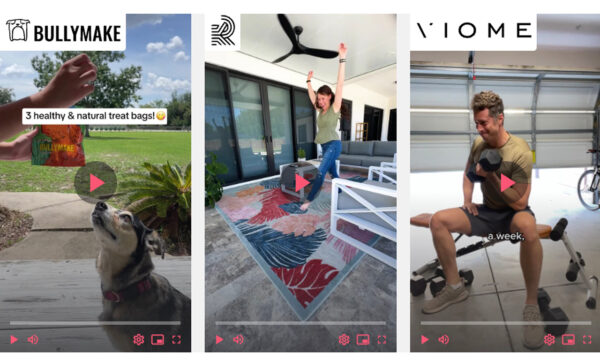How to build a taxi app in 2023: Steps, features and costs

Since Uber successfully disrupted the traditional taxi service, taxi-hailing apps have almost replaced traditional ride-hailing services and are here to stay. Today, mobile apps are critical, both for existing taxi business owners and startups that want to offer car booking services. However, with giants like Uber, Bolt and Lyft having a major share in this history, new businesses need more than mobile apps to stand out.
This article is for those interested in building a taxi app with ideas on how to distinguish a taxi booking service, factors essential for a successful taxi app development, strategies to compete with Uber, revenue models for a taxi app, and core features to add to the project. There will also be a rough estimate of taxi app development costs and an idea of the common pitfalls faced during ride-sharing app development.
A step-by-step guide on how to make an app for cab booking
- Offer a unique value proposition
- Find a niche
- Chose the revenue model
- Shape the vision
- Create a taxi booking app technical documentation
- Develop the app’s MVP
Step 1: Offer a unique value proposition
It’s important to find a unique value that a new mobile app offers drivers and passengers.
The unique value proposition specifies how potential customers will benefit from ytheour product offer, and how the products or services will address their needs and solve their problems, as well as what distinguishes the offer from its competition.
Examples of benefits can include a wider product range, superior customer service, improved quality, lower prices and so on.
Before finding the right value proposition, let’s analyse some of the major competitors and their value propositions.
Uber
Uber is the most significant player in the taxi app market. This taxi booking app is available in 67 countries and 78 cities and has over 50 million active monthly users.
Uber has two value propositions:
- Hassle-free and fast hailing
This emphasises the ease of using the app and how quickly one can hail a taxi with the Uber app. - Affordable pricing
This emphasises Uber’s reasonable pricing policy, which in theory makes their taxi services available for anyone of any social class. Uber was the first mobile taxi service to calculate rides specifically on distance instead of charging a flat rate.
Lyft
Lyft is another large taxi booking app by market share. However, Lyft only operates in the US (65 cities in 30 states). Lyft has two value propositions:
Ride in minutes
This states how quickly passengers who are looking for a taxi can find a Lyft taxi in a short time.- Take a wheel
This states how easy the process is to become a Lyft driver and start earning income.
Both of these apps for taxi services base their value proposition on saving time and convenience without calling attention to the passenger’s status, car preferences or any particular community.
HYPR
HYPR, a London-based start-up, is a taxi booking app that has built its value proposition around status and luxury. The value proposition of HYPR is as follows:
Luxury ride-hailing club
HYPR gives users a sense of belonging to a wealthy and successful community. It runs a fleet of luxury vehicles, so it matters that even more exclusive, HYPR passenger app access is not available to everyone. Users must fill out an application form and wait to be accepted to use the service. They could also gain access with an invitation code from an existing HYPR client.
Step 2: Find a niche
There’s no sense in trying to imitate other taxi service apps when developing a brand. Instead, it’s a time to find something that will distinguish this particular taxi app.
HYPR, from the first step, is an excellent example of finding a unique niche that works. For HYPR, its niche means that its target customer might differ from that of Uber and Lyft. So before a team can begin working on their project, they will need to understand its niche, audience and market.
It’s worth carrying out an in-depth market and competitor analysis to gain important insights and define goals, needs and specifications in order to find a niche in the taxi booking app market with low competition.
It’s important to remember that there’s no need to create a taxi booking app clone that does the same thing as similar apps; a business has to stand out.
Step 3: Chose the revenue model
A crucial part of the taxi app development process is deciding how the service can earn money. To turn a taxi booking application into a money-making business, one can use the following methods:
Commission from passengers
The business could collect 20-25% of the total ride cost leaving 75-80% for the driver.Service fees
The business could charge passengers a flat booking rate and additional service fees for security, service and payment processing, asides from the ride cost itself.- Third-party promotions
For example, Uber makes money from promotional collaboration with famous brands (Hilton, Pepsi and Spotify). This collaboration means that the brands can interact with Uber app users and give them benefits, gifts and treats from branded marketing campaigns. Cancellation fees
This type of payment is set as a penalty in case the passenger cancels a ride.- Advertising
One can run advertisements in a booking taxi app and charge a cost-per-click or cost-per-impression commission.
At this point, it’s time to go ahead and hire a developer team. The developer team at App Solutions, for example, can take on a taxi app and bring results in no time.
Step 4: Shape the vision
If the goal is to build an app like Uber, one needs to gather requirements for the project and show them to the taxi mobile app development team. And one of the essential requirements for building a taxi app is creating a project vision on how to solve particular problems users have.
To identify the project vision, it’s necessary to know:
- Who the mobile application is for
- What issues target users have
- Which technologies can help solve the issues
Companies like App Solutions can help shape and validate business ideas, as well as creating a failure-proof project vision for a taxi booking app and helping to turn ideas into a lucrative reality.
Step 5: Create technical documentation
Technical documentation tells developers what system they are about to build. It should contain technical requirements such as UI/UX specifications, the app’s tech stack and other necessary specifications.
Step 6: Develop the app’s MVP
An MVP (minimum variable project) is the app’s first version. It’s the smallest viable way to execute the idea and includes only essential functionality, sufficient for users to install the app and rank it.
In launching an MVP, one can set up taxi booking apps without spending extra resources and then add other features as time goes on.
Core features of mobile taxi apps
A taxi app has three essential perspectives. They are the driver app, the passenger app and an admin web-based panel managing both types of users, etc.
Passenger app features
Some of the features from the passenger taxi app perspective include:
Login and signup
This section also includes personal user details, such as name, registration date and contact details.
Passenger profile
Allows the passenger to edit personal information and change credentials and passwords.
Payment methods
A list of payment methods so the passenger can choose the preferred payment method.
User location
Allows the app to define the passenger’s location thanks to Google Map API integration.
Taxi request
Allows the passenger to place a taxi request and set the destination point. Contains info on ride costs and estimated time.
Matching
Enables the app to match passengers with nearby drivers.
Browse drivers list
Shows info on drivers with details on cars and reviews.
Trip awaiting
Includes a countdown to when the driver will arrive, tracking the driver’s position, and canceling the ride.
Online payment
Allows passengers to pay with their credit card via an integrated third-party payment gateway.
Notifications
Sends push notifications to the passenger to inform them of developments in the app or booking a ride.
Driver app features
Some of the features from the driver app perspective include:
Login and signup
Allows drivers to log in to the app with details like phone number and a verification code/password.
Driver profile
Keeps drivers’ personal information (name, phone number, car details etc) and allows editing.
Geolocation
Helps the driver to navigate to the passenger location with built-in street navigation (Google Map API).
Rides
Shows search parameters and a list with detailed information about requests.
Trip request confirmation
For confirming the trip and cancelling the request.
Trip
Includes information about the passenger’s approval of the ride, notifying the passenger that the driver has arrived, and when the ride started and ended.
Admin panel features
Some of the features from the admin panel perspective include:
Login and profile
Allows an admin to register in the platform, set the profile and change the password.
Admins roles
Allows providing different types of access to the platform to other administrators.
Drivers
Allows adding, editing and deleting a list of drivers, as well as their information.
Passengers
Allows adding, editing and deleting a list of passengers, as well as their information.
Cars
Let admins edit the list of cars and their details.
Rating
Allows viewing and editing of the driver rating.
Rides
Let admins view the list of rides and ride details.
Payments
Shows the list of transactions, transaction info such as user bank account, and the ride total.
How much does it cost to develop an app like Uber?
Taxi app development costs depends on several factors: the development team’s core tech expertise, the team’s location and the number of features.
Core tech expertise means the skill the development team have built up from delivering the same projects in the past. Getting such developers means that the time for initial research is reduced so that the owner will receive a mobile taxi app at a lower cost and in a shorter period.
The location of the taxi app development team influences the hourly rate of a developer. One can pay between $100 and $250 to US and Canada-based development teams for ride-hailing app development services, but developers from Eastern Europe charge $35 to $50 for an hour of coding.
As for the app’s functionality, the calculation is simple: the more features one wants to add, the higher the development cost of such an app.
Conclusion
The industry of taxi booking applications is more competitive than startup-friendly. But with a unique value proposition, a bullet-proof project vision and a reliable app development company, nothing is impossible.
The editorial unit























Facebook
Twitter
Instagram
YouTube
RSS